- Info@healthnherb.com
- +923008488752
Halsavit Syrup – Advanced Superfood for Energy & More!
Pack Size
Super Longevity & Strong Immunity! (With Potent Gingko Biloba for Natural Brain Boost)
Halsavit contains spirulina, a type of well researched and clinically studied blue-green algae, which is the most nutritiously dense food on the planet. Loaded with various nutrients including unique phytonutrients, almost all vitamins, minerals, amino acids, and essential fatty acids, Halsavit benefits your body as a powerful immunity booster, anti-oxidant, anti-inflammatory and natural anti-viral. Halsavit may also enhance energy, lower bad cholesterol, reduce blood pressure and sugar, improve symptoms of allergic rhinitis, and much more.
- Energy & Vitality
- Immunity Booster
- Nutrient Powerhouse
Note: Guaranteed Results (Natural Energy Boost) in One Month of Regular Use with recommended dose a day
₨375



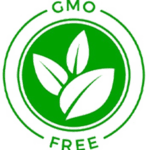
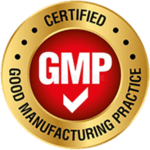

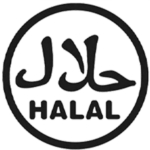
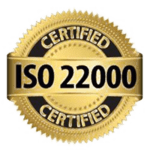
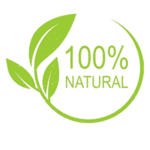
Our Products Contain High Dose, Potent, and Active Herbal Extracts, Vitamins, Minerals, & Natural Ingredients, so they have the maximum chance to help you!!
- Benefits & Uses
- Formulation & Ingredients
- Dosage
- How We Compare
- Research
- Quality Promise
- Reviews (1)
Benefits & Uses
Halsavit is a powerhouse of natural goodness, featuring an array of essential multivitamins, minerals, fatty acids, amino acids, proteins, antioxidants, and phytonutrients. This unique blend offers an impressive range of health benefits:
- Boosts energy levels and Immunity, invigorating your daily life.
- Enhances your immunity to better defend against illnesses and stay in top form.
- Reduces cold, cough, and runny nose
- Natural source of essential multivitamins, minerals, fatty acids, amino acids, protein, antioxidants, and phytonutrients.
- Helps Diabetic nephropathic patients
- Cleanses the Liver and is the most powerful anti-oxidant on the planet
- Reduces symptoms of allergic rhinitis (Clinically Studied)
- Strong Antiviral – May protect against viruses, including coronavirus
In addition Halsavit also exhibits the following effects on your health:
- Immunomodulation: Spirulina has immunomodulatory properties, supporting a healthy immune system.
- Antioxidant: It acts as an antioxidant, combating free radicals and oxidative stress.
- Antiviral: Halsavits chemical composition contributes to antiviral effects.
- Anticancer: Experimental evidence suggests potential anticancer effects.
- Antibacterial: It exhibits antibacterial properties.
- Anti-Inflammatory: Halsavit has been associated with alleviating inflammatory allergic reactions.
- Enhanced Energy Production: Ginkgo Biloba increases the production of ATP, boosting energy metabolism.
- Improved Oxygen Levels: It enhances oxygen levels in brain tissues.
- Antioxidant Activity: Ginkgo contains antioxidants like Vitamin C and carotenoids.
- Circulatory Support: Ginkgo flavonoids dilate micro-capillaries, improving circulation and affecting various organs, particularly the brain.
- Flexible Arteries: By preventing platelet aggregation, Ginkgo keeps arterial walls flexible and reduces the formation of arteriosclerotic plaque.
Formulation & Ingredients
Supplement Facts:
| Ingredient | Amount per tablet and 10 ml of syrup | % Daily Value |
| Spirulina (USP)
(Organic Spirulina Platensis Extract) |
500 mg | ** |
| Ginkgo Biloba Ext. (USP)
(Leaf Extract – Standardized for 24% Ginkgo-flavone Glycosides and 6% Terpene Lactones) |
30 mg | ** |
| Zinc (As Zinc Oxide) (USP) | 7.5 mg | 100 % |
| Lutein (USP) | 6 mg | ** |
** Daily Value not established
- Spirulina (Organic Blue-green Algae): An organic Spirulina Platensis extract (500 mg) that’s clinically researched and celebrated for its exceptional nutrition. Spirulina is a nutritional powerhouse packed with phytonutrients, carotenes, xanthophylls, essential fatty acids, galactolipids, sulfolipids, and minerals.
- Ginkgo Biloba Ext. (Leaf Extract – 24% Flavones & 6% Terpene Lactones): A standardized leaf extract (30 mg) of the ancient Ginkgo Biloba tree. This natural ingredient has a history dating back over 5,000 years in traditional medicine and offers numerous health benefits. It helps increase the body’s production of adenosine triphosphate (ATP), enhancing energy metabolism and brain function.
- Zinc (As Zinc Oxide): At 7.5 mg, zinc plays a crucial role in your overall health, supporting various bodily functions.
- Lutein: With 6 mg of lutein, this carotenoid has potential eye health benefits and antioxidant properties.
Dosage
Two (2) to four (4) tablets twice daily or Two (2) to four (4) tablespoon twice daily.
The specific doses depend on the condition its being used for:
- For immunity, four (4) tablets or 40 ml of syrup daily
- For cholesterol, doses in the range of two (2) tablets or 20 ml g per day may be impactful
- For energy and muscle performance, four (4) tablets or 40 ml of syrup daily have been used
- For blood glucose control, four (4) tablets or 40 ml of syrup daily
- Blood pressure may be affected at doses of four (4) tablets or 40 ml of syrup daily
- Effects for fatty liver have been seen at doses of 4.5 g per day
How We Compare
Halsavit is a superior choice compared to conventional Multivitamins and Minerals due to its exceptional quality and effectiveness. Here’s why Halsavit stands out:
- Natural Bioavailability: Halsavit is a natural source of vitamins, minerals, and amino acids, making it highly bioavailable. Unlike synthetic vitamins, which can be less efficiently absorbed, the nutrients in Halsavit are readily available for your body to use. This ensures that you get the maximum benefit from every dose. Halsavit features spirulina, a natural blue-green algae known as the most nutritionally dense food on the planet. With an astonishing 70% protein by weight and the remaining 30% packed with almost all essential vitamins, minerals, amino acids, and phytonutrients, Halsavit provides a holistic source of nutrition.
- Phytonutrient Rich: While many multivitamins focus solely on vitamins and minerals, Halsavit goes a step further. It contains spirulina, which is not only a source of essential nutrients but also features a unique compound called phycocyanin. Phycocyanin is renowned for its potent antioxidant properties, making it highly effective in enhancing immunity and shielding your body from the harmful effects of free radicals. Halsavit offers more than just basic vitamins; it empowers your health with the added benefit of phytonutrients.
- Complete Nutrition Solution: Halsavit isn’t just another multivitamin; it’s a comprehensive nutrition solution designed for adults. By incorporating Halsavit into your daily routine, you can rest assured that you are meeting all your nutritional needs. This means you don’t have to juggle multiple supplements or worry about nutritional gaps. Halsavit streamlines your daily nutrition intake, offering a hassle-free approach to achieving a balanced and healthy diet.
Make the smart choice for your health by choosing Halsavit. It’s not just a multivitamin; it’s a natural, bioavailable, and nutritionally rich solution that takes your well-being to the next level.
Research
Note: Read the leaflet carefully before you start taking this alternative medicine and keep it safe in case you need to refer to it again for information regarding usage and dosage. If you have any further questions, consult your doctor or contact us through our website “www.trendspharmaceuticals.com”. If the symptoms worsen or persist, consult your healthcare physician.
This is a brief document and does not represent complete information regarding beneficial effects of Halsavit. The information shared is primarily focused on the use of Halsavit as a nutritional supplement with natural anti-viral, immuno-protective, and antioxidant effects. The given information in any case does not limit or understate health benefits associated with daily consumption of Halsavit.
HALSAVIT
Description:
Halsavit contains Spirulina, a clinically-researched blue-green algae. Widely hailed as the most nutritionally dense food on the planet, this wonder food has been praised for its significant health benefits as a dietary supplement. Enriched with a unique combination of phytonutrients, vitamins, minerals, amino acids and essential fatty acids, Halsavit is a powerful immunity booster, antioxidant, natural antiviral, anti-cancer, and anti-bacterial. It also enhances energy, lowers bad cholesterol, helps control blood pressure/diabetes, improves symptoms of allergic rhinitis and much more.
Product Form: Tablets & Syrup
Size: 30 Tablets & 120ml Syrup
Supplement Facts:
| Ingredient | Amount per tablet and 10 ml of syrup | % Daily Value |
| Spirulina (USP)
(Organic Spirulina Platensis Extract) |
500 mg | ** |
| Ginkgo Biloba Ext. (USP)
(Leaf Extract – Standardized for Ginkgo-flavone Glycosides and Lactones) |
30 mg | ** |
| Zinc (USP) | 7.5 mg | 100 % |
| Lutein (USP) | 6 mg | ** |
** Daily Value not established
Nutrient Profile of Halsavit
| Physical Properties | |
| Appearance | Fine, uniform powder compressed into a tablet and / or blended into syrup |
| Colour | Blue green to green |
| Odour & Taste | Mild |
| General Composition | |
| Protein | 60-69% |
| Carbohydrates | 16-20% |
| Lipids | 5-7% |
| Minerals | 6-9% |
| Moisture | 2.5-6% |
| Phytopigments | Mg / 100 g |
| Total carotenoids | 400-650 |
| Beta Carotene | 150-250 |
| Xanthophylls | 250-470 |
| Zeaxanthin* | 125-200 |
| Chlorophyll | 1300-1700 |
| Phycocyanin | 15000-19000 |
| Ginkgo‐flavone Glycosides | 1320- 1400 |
| Terpene Lactones | 300-360 |
| Units / 100 g (Oxidation Score) | |
| ORAC (µmole TE) | 24400 |
| Superoxide Dismutase | 392000 |
| Fatty Acids | G / 100 g |
| Myristic acid | 0.01 – 0.03 |
| Palmitic acid | 2.0 – 2.5 |
| Stearic acid | 0.01 – 0.05 |
| Oleic acid | 0.10 – 0.20 |
| Linoleic acid | 0.75 – 1.2 |
| Gamma -Linolenic acid | 1.00 – 1.50 |
| Amino Acids | G / 100 g |
| Alanine | 4.0 – 5.0 |
| Aspartic acid | 1.5 – 3.0 |
| Arginine | 3.0 – 5.0 |
| Cystine | 0.5 – 0.75 |
| Glutamic acid | 6.0 – 9.0 |
| Glycine | 2.0 – 4.0 |
| Histidine | 0.5 – 1.5 |
| Isoleucine | 3.0 – 4.0 |
| Leucine | 3.0 – 5.0 |
| Lysine | 3.0 – 6.0 |
| Methionine | 1.0 – 6.0 |
| Phenyl Alanine | 2.5 – 3.5 |
| Proline | 2.0 – 3.0 |
| Serine | 3.0 – 4.5 |
| Threonine | 1.5 – 3.0 |
| Tryptophane | 1.0 – 2.0 |
| Tyrosine | 1.0 – 3.0 |
| Valine | 1.0 – 3.5 |
| Vitamins | mg / 100g |
| Vitamin B1 (Thiamine) | 0.1.5 – 0.30 |
| Vitamin B2 (Riboflavin) | 4.0 – 7.0 |
| Vitamin B3 (Niacin) | 10.0 – 25.0 |
| Vitamin B6(Pyridoxine) | 0.5 – 1.5 |
| Vitamin B12 (Analogue) | 0.10 – 0.30 |
| Folic acid | 0.05 – 0.30 |
| Inositol | 70 – 90 |
| Vitamin K | 0.90 – 1.05 |
| Lutein | 1100 |
| Minerals | mg/100g |
| Calcium | 60 – 110 |
| Phosphorus | 700 – 1000 |
| Magnesium | 200 – 300 |
| Iron | 25 – 40 |
| Sodium | 700 – 1000 |
| Potassium | 1000 – 1500 |
| Zinc | 1380 – 1383 |
| Copper | 0.2 – 0.4 |
| Manganese | 1.0 – 3.0 |
| Chromium | 0.1 – 0.3 |
| Selenium | 0.003 – 0.010 |
Mechanisms of Action:
Halsavit’s main ingredient, Spirulina (Arthrospira Platensis) is a unique freshwater plant that has been of an enormous interest to nutritional scientists over the past decade. Spirulina’s concentrate nutrition, as shown in Halsavits nutrient profile, makes it an ideal food supplement for people of all ages and lifestyles. It has a long history of human consumption. Currently Spirulina is used as a nutraceutical ingredient due to its unique combination of phytonutrients like phycocyanin, carotenes, xanthophylls, GLA, galactolipids, sulfolipids, chlorophyll and minerals. The three major bioactive components of Spirulina, biliprotein pigment Phycocyanin, sulfated polysaccharides and gamma linolenic acid play significant roles in improving human body functions. New experimental evidences support immunomodulation, potential health benefits and antiviral effects of Spirulina supplementation are mainly due to its chemical composition. In addition to Spirulina’s potential health effects, such as antibacterial, antioxidant, anticancer, immunomodulation and antiviral activities, some other positive effects were also observed against some disorders like malnutrition, diabetes, hyperlipidemia, inflammatory allergic reactions, obesity, anemia, heavy metal/chemical-induced toxicity and radiation damage.
Moreover, Halsavit’s second main ingredient, Ginkgo Biloba is one of the oldest living tree species, dating back over 300 million years, and individual trees can live for over 1,000 years. In China extracts of the fruit and leaves of the ginkgo tree have been used for over 5,000 years to treat lung ailments such as asthma and bronchitis, and as a remedy for cardiovascular diseases. Recently western researchers have been studying ginkgo biloba as a treatment for senility, hardening of the arteries, and as a treatment for oxygen deprivation. More than 34 human studies on ginkgo have been published since 1975, showing, among other things, that ginkgo can increases the body’s production of the universal energy molecule adenosine triphosphate, commonly called ATP. This activity has been shown to boost the brains energy metabolism of glucose and increase electrical activity.
Scientists also discovered that ginkgo contains an abundance of useful compounds including the antioxidants Vitamin C and carotenoids, but it is the flavonoid compounds collectively known as “ginkgolides” that are the most remarkable. The ginkgo flavonoids act specifically to dilate the smallest segment of the circulatory system, the micro-capillaries, which has a widespread affect on the organs, especially the brain. Researchers have also reported that Ginkgo extracts effectively increase blood circulation and increase oxygen levels in brain tissues. Ginkgo is also a powerful antioxidant that prevents platelet aggregation inside arterial walls, keeping them flexible and decreasing the formation of arteriosclerositic plaque.
Antiviral properties
Extracts from blue green algae, including Spirulina platensis, studied by researchers at the National Cancer Institute (NCI), USA yielded promising antiviral activity. The effect was mediated by a reduction in the cytopathic effects caused by the invading pathogen. Acidic polysaccharides such as calcium spirulan (Ca-SP) present in Spirulina platensis act against and inhibit the replication of several viruses. This potent and broad-spectrum antiviral activity particularly targeted enveloped viruses such as Influenza A, HIV, Herpes Simplex, Cytomegalovirus, Mumps and Measles Viruses. The cytopathic role of these viruses and replication was inhibited in human T cells, peripheral blood mononuclear cells and Langerhans cells where prevention of virus-cell attachment and fusion with host cells was observed. The Ca-SP also targeted viral absorption/penetration and some replication stages of progeny viruses. The water extract of Spirulina platensis interferes with the virus entry into host cells, particularly of HSV-1. Overall results showed that the Ca-SP, methanol (MeOH) and water extracts of Spirulina platensis were active in preventing replication of a host of enveloped viruses. These established mechanisms against RNA viruses such as SARS-CoV, Dengue, Influenza A, Mumps, Measles, Hepatitis C, HIV, all may indicate potential efficacy of spirulina platensis in a wide variety of coronaviruses as well and may even be beneficial for Covid-19.
Figure 1: Anti-viral properties of cyanobacterium, Spirulina Platensis. (2)
Immunomodulatory properties
Spirulina enhances components of the mucosal and systemic immune system by activating the cells of the innate immune system. The aqueous extract of spirulina was found to have a major impact on the immune system by increasing the phagocytic activity of macrophages and stimulating the NK cells. This also enhanced NK-mediated IFNγ production. It has also been noted that in in-vivo and in-vitro it suppressed the growth of tumor cells and induced the lymphocytes in the spleen to produce TNF-α. Due to its stimulatory effects in the production of cytokines and antibodies, it also mobilized the adaptive immune system and played a role in the activation and mobilization of T and B cells. The strong IL-1β, IL-responses elicit an age-dependent enhancement of the adaptive immune response. Spirulina was also effective in potentiating the cell-mediated immunity by stimulating the Th-1 type response. A cytokine array test was performed noted that spirulina had an increased effect on the expression of genes encoding the chemokines interleukin (IL)-8, IP-10, the cytokines TNF-α, IL-1β, and the enzyme cyclooxygenase-2 (COX-2). Moreover, the effects of phycocyanin (a biliprotein of Spirulina) is seen to enhance the biological defense activity by reducing allergic inflammation. This is carried out by suppression of antigen-specific IgE antibodies and through maintaining the mucosal immune system function against infectious diseases.
Figure 2: Immunomodulatory potentials of Spirulina in innate and adaptive immune responses along with its role in hypersensitive reactions.
| Immune Response Type | Mechanism of Action / Effects | References |
| Innate immunity
|
Expression of genes encoding chemokines IL-8, IL-1 â, iL -2, TNF-á, NF-kappa B, MCP-1, MiP-1á, MiP-1â, IP-10, enzyme cyclo-oxygenase-2 and THP-1 activation. Increase in the antigen-specific, as well as the total, IgA antibody level in the Peyer’s patches, mesenteric lymph nodes and intestinal mucosa as well as in the spleen cells in mice.Lower antigen-specific IgG1 and IgE antibody levels in the serum suppressing allergic reactions. Signaling responses through Toll in blood cells; increasing activity of macrophages, Natural Killer cells (NK), and neutrophils. The presence of co-operative IL-12 and IL-18 for NK-mediated iFN production.Caspase dependent apoptosis induction in HeLa cells in vitro; activation of pro-apoptotic gene and down regulation of anti-apoptotic gene expression, to facilitate the transduction of tumoural apoptosis signals; activation of caspases 2, 3, 4, 6, 8, 9, and 10. |
4, 21, 52, 53, 59, 60, 5, 18, 32, 33, 74, 64, 80, 81, 82, 20, 34 |
| Innate immunity/ Hypersensitive reactions | Modulating the differentiation of Th2 cells mediated, in part, by inhibiting the production of iL-4 in patients with allergic rhinitis. Suppression of antigen specific IgE antibody. Reduces LTB4 and prostaglandin E2 levels in the arachidonic acid-induced mouse ear inflammation test. |
|
| Hypersensitive reactions | Dose-dependent inhibition of histamine release from activated rat peritoneal mast cells. Increasing the levels of cyclic AMP inhibiting mast cell-mediated immediate-type allergic reactions in vivo and in vitro. | |
| Adaptive immunity | Th-1 type response and potentiating cell-mediated immunity; Antigen presenting cells. Modulating the T-cell subtype levels in adult and aged mice. Changes in leukocyte subset proliferation and cytokine productions responsiveness to two recall antigens, Candida albicans (CA) and tetanus toxoid (TT), in vitro. Potent antiviral properties against herpes simplex virus type 1, cytomegalovirus, influenza virus and human immunodeficiency virus type 1. Ca-SP has very low anticoagulant activity and long half-life. increased humoral primary immune response to sheep red blood cells. Increases the percentage of phagocytic cells in peritoneal macrophages. Enhanced mitogenic proliferation of lymphocytes |
Antioxidant properties
A phytochemical richly present in Spirulina, phycocyanobilin, mimics the potent inhibitory impact of biliverdin and free bilirubin on NADPH oxidase complex, thereby inhibiting its activity and promoting synthesis of increased antioxidant reduced glutathione (GSH) and reducing oxidized glutathione (GSSG). This decreases oxidative stress as well as concentrations of free radicals. Phycocyanin has been observed to play a major role in scavenging hydroxyl and peroxyl radicals. A double-blind, placebo-controlled study performed on individuals after exercise, showed decreased creatine kinase when they were supplemented with Spirulina. There was also a marked increase in exercise performance and GSH concentrations and a reduction in lipid peroxidation owing to the antioxidant properties of Spirulina. Protein extracts containing phycobiliproteins have been postulated to provide protection against teratogenesis secondary to reactive oxygen species by reducing oxidative stress. Protein extract and the biliprotein phycocyanin increase GSH in cells in order to reduce oxidative stress induced by iron. This was discovered by exposing human neuroblastoma cells in vitro to toxic amounts of iron and then to Spirulina. It was observed that Spirulina effectively protects the activity of the cellular antioxidant enzymes and reduces iron-induced oxidative stress as well as radical-mediated cell death. Geriatric patients who were administered Spirulina for 16 weeks showed a remarkable improvement in the antioxidant potential, as measured by the increased levels of antioxidant status in plasma of these individuals. Reversal of age-related declines in memory and learning were also observed.
Figure 3: Antioxidant properties of Spirulina and their mechanisms
| Component of Spirulina | Mechanism of action/effects | References |
| Phycocyanobilin – a derivative and homolog of biliverdin
|
Appearing to mimic the potent inhibitory impact of biliverdin and free bilirubin on NADPH oxidase activity “full-spectrum antioxidant therapy” (FSAT) that features a complementary array of natural antioxidants.Significant increase in exercise performance, fat oxidation, and GSH concentration and attenuated the exercise-induced increase in lipid peroxidation. |
23
22 27 |
| Protein extract containing phycobiliproteins
|
Showed a protector anti teratogenic effect in a dose-dependent manner.
Protected in jaundiced rats against oxidative stress, as demonstrated by reduction of intestinal lipid peroxidation, |
28
29 |
| Phycocyanobilin | Potent inhibitor of NADPH oxidase; broad range of anti-inflammatory, cytoprotective, and anti-atherosclerotic effects in rodents administered spirulina orally. |
35 |
| whole supplement | Significant increase in IL-2 level and superoxide dismutase activity in females. | 4 |
| whole supplement | Significant decrease in lipid peroxidation (MDA) and elevation of levels of GSH, SOD, GPX, NO, creatinine and urea. Therapeutic potential in gentamicin sulphate induced nephrotoxicity. | 83 |
| Protein extract and the biliprotein phycocyanin | Protecting the activity of the cellular antioxidant enzymes GPx, GPx-Se and GR and by increasing reduced glutathione in cells against oxidative stress induced by iron. Mechanism related to antioxidant activity, capable of interfering with radical-mediated cell death. |
25 |
| Beta-carotene | Natural source compared to synthetic supplements; vitamin A equivalence of spirulina beta-carotene in humans. | 84 |
| Ascorbic acid (AA) and water extract of Spirulina plantesis (SP) | Suppression of 5-fluorouracil induced lipid peroxidation to a significant extent. | 39 |
| Selenium and phycocyanin | Se-PC exhibited stronger antioxidant activity than phycocyanin by scavenging ABTS, DPPH, superoxide anion, and 2,2′-azobis-(2-amidinopropane)dihydrochloride free radicals. Dose-dependent protective effects on erythrocytes against H2O2-induced oxidative DNA damage. Potent antiproliferative agent against human melanoma A375 cells and human breast adenocarcinoma MCF-7 cells. induction of apoptosis by DNA fragmentation, and nuclear condensation. Potent cancer chemopreventive activities. |
40 |
| Four selected Spirulina platensis preparations: (1) Biospirulina, (2) SpiruComplex, a preparation with naturally bound selenium, chromium and zinc, (3) SpiruZink, a preparation with naturally bound zinc, (4) Zinkspirulina + Acerola, a preparation with naturally bound zinc and acerola powder. |
Dose-dependent inactivation of free superoxide radicals (antioxidant effect) as well as an anti-inflammatory effect – reduction of the metabolic activity of functional neutrophils and inactivation of superoxide radicals generated during an oxidative burst. |
85 |
| whole supplement | Reducing the LPO level, serum glutamate oxaloacetate and serum glutamate pyruvate transaminase activity and increase in liver GSH level. Restoration of activities of antioxidant enzymes superoxide dismutase, catalase and glutathione-S-transferase to near normal level in mercuric chloride intoxicated mice. Defense mechanism in mercuric chloride induced toxicity and provides evidence that it may have a therapeutic role in free radical-mediated diseases. |
42 |
| Chromophore phycocyanin, both without bound Se and as selenium-enriched.
|
owered plasma cholesterol and non-HDL cholesterol 65 concentrations Significant increase in plasma antioxidant capacity. A sparing effect in liver glutathione peroxidase and superoxide dismutase activity. Cardiac production of superoxide anion significantly decreased The expression of p22phox subunit of NAD(P)H oxidase decreased Chronic consumption of Se-rich spirulina phycocyanin powerfully prevents the development of atherosclerosis. The underlying mechanism is related mainly to inhibiting pro-oxidant factors and at a lesser extent improving the serum lipid profile. |
43 |
| whole supplement | Significant increase in exercise performance, fat oxidation, and 60 GSH concentration and attenuated the exercise-induced increase in lipid peroxidation. |
84 |
| Spirulina and soy protein | Preventive effect of the skeletal muscle damage and that probably led 67 to postponement of the time of exhaustion during all-out exercise. | 45 |
Therapeutic Indications/Health benefits:
- Energy and Vitality Booster – Increased Power Output
- 2g Spirulina daily for 8 weeks was associated with an increase in power output and mean power output but not with muscular endurance. (90)
- 6g of spirulina for 4 weeks was associated with prolonged time to exhaustion in a 2-hour run secondary to increased fat oxidation, and also suppressed parameters of oxidation. (91)
- A natural Anti-viral that helps reduce viral load
- This potent and broad-spectrum antiviral activity of Halsavit particularly targets RNA enveloped viruses such as Influenza A, HIV, Herpes Simplex, Cytomegalovirus, Mumps and Measles Viruses. Established mechanisms against RNA viruses such as, Dengue, Influenza A, Mumps, Measles, Hepatitis C, HIV, all indicates potential efficacy of spirulina platensis in a wide variety of coronaviruses and may be beneficial for Covid-19.
- Spirulina, in Halsavit is capable of inducing a sustained virologic response in some persons with Hepatitis C, at about 20% of persons (13.3% complete, 6.7% with some degree of improvement) (87)
- A potent Antioxidant with free radical scavenging capabilities
- 8g of Spirulina for 4 months was associated with improved lipid profile, immune variables, and antioxidant capacity; more-so in females, but favorable inflammatory changes in men. (89)
- Immunity booster with innate and adaptive immunomodulation properties
- Two pilot studies, independent and their results combined, note increases of NK cell mRNA and subsequent NK cell tumor-killing activity with 200-400mg Spirulina a day. (86)
- 3g Spirulina daily for 12 weeks in elderly persons with a history of anemia improved blood parameters (without influencing RBC) and increased WBC count. (88)
- Inflammatory Disorders:
- It exhibits an anti-inflammatory activity by acting on the cyclo oxygenase enzyme 3, inhibiting production of prostaglandins and leucotrienes.
- Helps manage Type 2 Diabetes:
- In a human study, Spirulina supplementation at 2 g/day for 2 months given to diabetic patients improved glycosylated hemoglobin (HbA1C) and favorably altered the serum lipid profile. These studies show that Spirulina can be used as a functional food to manage Type 2 Diabetes.
- Hypertension:
- In humans, Spirulina reduced blood pressure in hypertensive subjects when given 4.5 g Spirulina for 6 weeks. Spirulina supplementation reduced both systolic and diastolic blood pressure in subjects.
- Cholesterol Reduction
- Spirulina consumption reduces Serum cholesterol levels by 4.5% in 4 weeks.
- In a human study, the effect of orally supplemented Spirulina (4.5 g/day, for 6 weeks) was evaluated in Mexican population. Spirulina significantly reduced serum triglyceride values and boosted HDL and lowered total cholesterol in the test subjects.
- Anti-Cancer Activity
- Evaluation of chemo prevention of oral cancer with spirulina evaluated the chemo preventive activity of spirulina (1 gm./day for 12 months) in reversing oral leukoplakia in pan tobacco chewers in Kerala, India.
- Complete regression of lesions was observed in 20 of 44 (45%) evaluated subjects supplemented with spirulina, as opposed to 3 of 43 (7%) in the placebo arm.
- Certain special enzymes called “Endonucleases” repair damaged DNA to keep cells alive and healthy. When these enzymes are deactivated by toxins or radiation, errors in DNA go un-repaired and may eventually result in cancer. Spirulina prevents deactivation of Endonucleases, thereby preventing and even correcting early cancers.
- Enhancement of endonuclease activity and repair DNA synthesis by polysaccharide of spirulina.
- Exhibited inhibitive effect and mechanism of polysaccharide of spirulina on transplanted tumour cells in mice.
- Radiation protection
- Ionizing radiation can cause mutations in the bone marrow cells. Spirulina polysaccharide was shown to reduce mutagenesis in animal studies.
- Lipid peroxidation Inhibition in arthritis, Alzheimer’s, immunological disorders:
- Lipid peroxidation causes damage to cell membranes. Research suggests that phycocyanin present in spirulina inhibits lipid peroxidation at a concentration of 5oomM in rats microsomes
- Anti-platelet:
- It inhibits platelet aggregation by reducing prostaglandin mediated thromboxane A2 formation, thus acting as a thromboxane synthase inhibitor.
- Neurodegenerative Disorders:
- Neurodegenerative disorders like Parkinson’s and Alzheimer’s are associated with oxidative stress. Preclinical experiments with rats showed that phycocyanin had potential to prevent oxidative stress produced in the hippocampus of experimental animals.
- Age related Cognitive Decline:
- Age related cognitive decline can be due to inflammation related oxidative damage to the central nervous system (CNS). Diet high in antioxidant activity is able to reduce this decline. Spirulina was shown to reverse age-induced decreases in cerebellar β-adrenergic function in rats, and this effect may be due to high antioxidant capacity of Spirulina.
- Neurogenesis:
- Neurogenesis or production of new neurons is a lifelong occurrence, and necessary for learning. Inflammation causes a decrease in neurogenesis. In a rat model, diet enriched with Spirulina was able to negate this inflammation related decrease in brain neurogenesis.
- Neuroprotective:
- Spirulina was shown to have neuroprotective effects against transient focal ischemia in rats. This effect could be due to the decrease in pro inflammatory cytokines with Spirulina diet.
- Kidney detoxification
- Scientific studies suggest Spirulina may have a beneficial effect for humans suffering from heavy metal poisoning and that kidney side effects may decrease when spirulina is taken with the administration of drugs.
Who Should Consume Halsavit Daily?
Health conscious people:
- Halsavit is for those who want to just live and enjoy a healthy life.
Children:
- Children usually dislike vegetables. Nevertheless, they need a balanced diet to ensure proper growth and to prevent them from acquiring and nutritionally deficient diseases, which could be achieved by Halsavit.
Busy People:
- People who do not have time to keep track of their balanced diet. They will be supplied with all the necessary nutrients and regain their energy quickly.
Athletes and Sports people:
- They can enjoy long lasting energy and reduction in recovery time after exercise.
People who are recovering from illnesses:
- Will provide complete nourishment and quicken the healing process.
Weight Watchers:
- Halsavit contains phenylalanine which acts on the brain’s appetite center as a weight suppressant, free from the dangers of slimming pills.
People with Low Immunity:
- Low immunity increases the risk of developing viral and bacterial infections.
Type 2 Diabetes:
- Reducing systemic inflammation
- Favorably altering your lipid profile by reducing serum triglycerides and increasing HDL.
- Improving vasodilation in those who are obese as a result of high fructose diets (which has benefits for diabetics, as well as for those with hypertension and cardiovascular disease)
Cataract patients:
- Reducing age-related macular degeneration (ARMD) i.e deterioration of your macula (the region in your eye that controls acute vision)
- Spirulina provides carotenoid pigments called xanthophylls—lutein, zeaxanthin, and possibly astaxanthin which help protect the eyes from damage by slowing down ultraviolet-induced oxidation of lipid membranes, thereby helping prevent degeneration of the macula.
Heart patients:
- Role of Spirulina in terms of creating better lipid profiles, controlling hypertension, and increasing blood vessel elasticity
- Decreases in blood pressure and plasma lipid concentrations, especially triacylglycerols and low-density lipoprotein-cholesterol have been demonstrated as a result of oral consumption of Spirulina.
- Results also showed that HDL levels saw a significant increase, while both systolic and diastolic blood pressure decreased. Improved glycosylated hemoglobin and prevented hypertension and vasoconstriction.
Suffering from erythromycin induced liver toxicity:
- Protective agent as lipid peroxidation reduced with increase in hepato-protective glutathione.
Suffering from Non-alcoholic fatty liver disease:
- Prevents the buildup of triglycerides in your liver
- Inhibits lipid peroxidation
- Reduces liver inflammation
- Protects your liver from damage by heavy metals, like lead and mercury.
Prevention of Stroke
- Reduces platelet aggregation, reducing risk for thromboembolism.
- Highest neuroprotective effect.
- Halsavit can suppress NADPH oxidase, lowering your risk for neurodegenerative disorders such as Parkinson’s and Alzheimer’s.
Anemic Patients:
Spirulina stimulates production of stem cells by bone marrow.
Suffering from arthritis:
Gamma linoleic acid manages inflammation and prevents arthritis.
Renal Failure:
Applicable to the management of general renal dysfunction and heavy metal poisoning.
Side effects and adverse effects:
The Dietary Supplements Information Expert Committee of the United States Pharmacopeia reviewed the safety of spirulina in 2011. The committee unanimously voted for a Class A safety assignment for spirulina, meaning that available evidence did not indicate it to pose a serious health risk when properly formulated and used.
In spite of the wide usage for the beneficial effects, a few side effects and contraindications have been reported with spirulina use. The most frequently reported adverse effects are headache, muscle pain, flushing of the face, sweating, and difficulty concentrating. These have been described in people taking 2 tablets or 20ml of Halsavit. Skin reactions have also been reported. Spirulina should be avoided by people who have the metabolic disorder phenylketonuria, as phenylalanine content can be harmful.
Drug Interactions:
Dosage and administration:
Oral route the tablets should be swallowed, without chewing, with half a glass of water at the end of a meal.
Syrup can be taken at the end of a meal.
Two (2) to four (4) tablets twice daily or Two (2) to four (4) tablespoon twice daily.
The specific doses depend on the condition its being used for:
- For immunity, four (4) tablets or 40 ml of syrup daily
- For cholesterol, doses in the range of two (2) tablets or 20 ml g per day may be impactful
- For energy and muscle performance, four (4) tablets or 40 ml of syrup daily have been used
- For blood glucose control, four (4) tablets or 40 ml of syrup daily
- Blood pressure may be affected at doses of four (4) tablets or 40 ml of syrup daily
- Effects for fatty liver have been seen at doses of 4.5 g per day
Overdosage:
Up to five (5) tablets or 50 ml of Halsavit daily is completely safe according to research. Adverse symptoms may occur if consumption is increased beyond the safe limit.
Inform your doctor immediately in case of massive absorption.
Shelf life:
Do not use after two (2) years starting from the date of manufacturing or as per the expiry date mentioned on the box.
Storage conditions:
- Store below 30 C.
- Keep in a dry place
- Keep away from direct sunlight and heat
- Keep all medications out of the reach and sight of children
Manufactured by:
Trends Pharmaceuticals
References:
- Ciferri O (1983) Spirulina, the edible microorganism Microbiol Rev 47(4) 551-578
- ANTIVIRAL PROPERTIES OF CYANOBACTERIUM, SPIRULINA PLATENSIS-A REVIEW International Journal of Medicine and Pharmaceutical Sciences (IJMPS) ISSN(P): 2250-0049; ISSN(E): 2321-0095 Vol. 3, Issue 5, Dec 2013, 1-10.
- The beneficial effects of spirulina focusing on its immunomodulatory and antioxidant properties – Nutrition and Dietary Supplements 2010:2 73–83
- Mittal A, Kumar PV, Banerjee S, Rao AR, Kumar A. Modulatory potential of Spirulina fusiformis on carcinogen metabolizing enzymes in Swiss albino mice. Phytother Res. 1999;13(2):111–114.
- Mao TK, Van de Water J, Gershwin ME. Effects of a Spirulina-Based Dietary Supplement on Cytokine Production from Allergic Rhinitis Patients. J Med Food. 2005;8(1):27–30.
- Sammon AM. Dietary Linoleic acid, immune inhibition and disease. Postgrad Med J. 1999;75(881):129–132.
- Kulshreshtha A, Zacharia J, Jarouliya U, Bhadauriya P, Prasad GBKS, Bisen PS. Spirulina in Health Care Management. Current Pharm Biotechnol. 2008;9(5):400–405.
- Watanabe H, Pan ZQ, Schreiber-Agus N, DePinho RA, Hurwitz J, Xiong Y. Suppression of cell transformation by the cyclin-dependent kinase inhibitor p57KIP2 requires binding to proliferating cell nuclear antigen. Proc Natl Acad Sci U S A. 1998;95(4):1392–1397.
- Chen T, Wong YS, Zheng W. Induction of G1 cell cycle arrest and mitochondria-mediated apoptosis in MCF-7 human breast carcinoma cells by selenium-enriched Spirulina extract. Biomed Pharmacother. 2009;27. Epub ahead of print 2009.
- Dasgupta T, Banejee S, Yadav PK, Rao AR. Chemomodulation of carcinogen metabolising enzymes, antioxidant profiles and skin and forestomach papillomagenesis by Spirulina platensis. Mol Cell Biochem. 2001;226(1–2):27–38.
- MishimaT,MurataJ,ToyoshimaM,etal.Inhibitionoftumorinvasion and metastasis by calcium spirulan (Ca-SP), a novel sulfated polysac- charide derived from a blue-green alga, Spirulina platensis. Clin Exp Metastasis. 1998;16(6):541–550.
- AkaoY,EbiharaT,MasudaH,etal.Enhancementofantitumornatural killer cell activation by orally administered Spirulina extract in mice. Cancer Sci. 2009;100 (8):1494–501. Epub 2009 May 6.
- Chen T, Wong YS. In vitro antioxidant and antiproliferative activities of selenium-containing phycocyanin from selenium-enriched Spirulina platensis. J Agric Food Chem. 2008 25;56(12):4352–4358. Epub 2008 Jun 4.
- Hayashi T, Hayashi K, Maeda M, Kojima I. Calcium spirulan, an inhibi- tor of enveloped virus replication, from a blue-green alga Spirulina platensis. J Nat Prod. 1996;59(1):83–87.
- Ayehunie S, Belay A, Baba TW, Ruprecht RM. Inhibition of HIV-1 tensis (Arthrospira platensis). JAIDS: J Acquir Immune Def Synd Human Retrovirol. 1998;18(11):7–12.
- Hayashi T, Hayashi K, Maeda M, Kojima IA. Natural sulfated polysaccharide, calcium spirulan, isolated from Spirulina platen- sis: in vitro and ex vivo evaluation of anti-herpes simplex virus and anti-human immunodeficiency virus activities. AIDS Res Hum Retroviruses.1996;12(15):1463–1471.
- Simpore J, Zongo F, Kabore F, Dansou D, Bere A, Nikiema JB. Nutrition Rehabilitation of HIV-Infected and HIV-Negative Under- nourished Children Utilizing Spirulina”. Annal Nut Metabolism. 2005;49(6):373–380.
- Park HJ, Lee YJ, Ryu HK, Kim MH, Chung HW, Kim WYA. Random- ized double-blind, placebo-controlled study to establish the effects of Spirulina in elderly Koreans. Annal Nutr Metabol. 2008;52(4): 322–329.
- Khan Z, Bhadouria P, Bisen PS. Nutritional and therapeutic potential of spirulina. Curr Pharm Biotechnol. 2005;6(5):373–379.
- Lee AN, Werth VP. Activation of Autoimmunity Following Use of Immunostimulatory Herbal Supplements. Arch Dermatol. 2004;140(6): 723–727.
- Zhang HQ, Lin AP, Sun Y. Chemo and radio protective effects of poly- saccharide of spirulina platensis on haematopoietic stem cells in dog and mice. Acta Pharmacol Sin. 2001;22(12):1121–1124.
- Remirez D, Ledon N, Gonzale R. Role of histamine in the inhibitory effects of phycocyanin in experimental models of allergic inflammatory response. Med Inflamm. 2002;11(2):81–85.
- Hayashi O, Katayanagi Y, Ishii K, Kato T. Flow cytometric analysis of age-related changes in intestine intraepithelial lymphocyte subsets and their functional preservation after feeding mice on spirulina. J Med Food. 2009;12(5):982–989.
- Rasool M, Sabina EP. Appraisal of immunomodulatory potential of Spirulina fusiformis: an in vivo and in vitro study. J Nat Med. 2009; 63(2):169–175.
- Løbner M, Walsted A, Larsen R, Bendtzen K, Nielsen CH. Enhance- ment of human adaptive immune responses by administration of a high-molecular-weight polysaccharide extract from the cyanobacterium Arthrospira platensis. J Med Food. 2008;11(2):313–322.
- Trushina EN, Gladkikh O, Gadzhieva ZM, Mustafina OK, Pozdniakov AL. The influence of Spirulina and Selen-Spirulina on some indexes of rat’s immune status Article Russian Vopr Pitan. 2007;76(2):21–25.
- Balachandran P, Pugh ND, Ma G, Pasco DS. Toll-like receptor 2-dependent activation of monocytes by Spirulina polysaccharide and its immune enhancing action in mice. Int Immunopharmacol. 2006;6(12): 1808–1814.
- Grzanna R, Polotsky A, Phan PV, Pugh N, Pasco D, Frondoza CG. Immolina, a high-molecular-weight polysaccharide fraction of Spirulina, enhances chemokine expression in human monocytic THP-1 cells. J Altern Complement Med. 2006;12(5):429–435.
- Pugh N, Ross SA, ElSohly HN, ElSohly MA, Pasco DS. Isola- tion of three high molecular weight polysaccharide preparations with potent immunostimulatory activity from Spirulina platensis, aphanizomenon flos-aquae and Chlorella pyrenoidosa. Planta Med. 2001;67(8):737–742.
- Nemoto-Kawamura C, Hirahashi T, Nagai T, Yamada H, Katoh T, Hayashi O. Phycocyanin enhances secretary IgA antibody response and suppresses allergic IgE antibody response in mice immunized with antigen-entrapped biodegradable microparticles. J Nutr Sci Vitaminol (Tokyo). 2004;50(2):129–136.
- Cingi C, Conk-Dalay M, Cakli H, Bal C. The effects of Spirulina on allergic rhinitis. Eur Arch Oto-Rhino-Larynol. 2008;265(10): 1219–1223.
- Hirahashi T, Matsumoto M, Hazeki K, Saeki Y, Ui M, Seya T. Activa- tion of the human innate immune system by Spirulina: augmentation of interferon production and NK cytotoxicity by oral administration of hot water extract of Spirulina platensis. Int Immunopharmacol. 2002;2(4):423–434.
- Qureshi MA, Garlich JD, Kidd MT. Dietary Spirulina platensis enhances humoral and cellmediated immune functions in chickens. Immuno- pharmacol Immunotoxicol. 1996;18(3):465–476.
- Hayashi O, Katoh T, Okuwaki Y. Enhancement of antibody production in mice by dietary Spirulina platensis. J Nutr Sci Vitaminol (Tokyo). 1994;40(5):431–441.
- McCarty MF. Practical prevention of cardiac remodeling and atrial fibrillation with full-spectrum antioxidant therapy and ancillary strate- gies. Med Hypoth. 2010.
- McCarty MF. Potential utility of full-spectrum antioxidant therapy, citrulline, and dietary nitrate in the management of sickle cell disease. Med Hypoth. Epub 2010 Jan 18.
- Mendiola JA, Martín-Alvarez PJ, Señoráns FJ, et al. Design of natural food antioxidant ingredients through a chemometric approach. J Agric Food Chem. 2010;58(2):787–792.
- Barmejo-Bescós P, Piñero-Estrada E, Villar DF, A. Neuroprotection by Spirulina platensis protean extract and phycocyanin
against iron- induced toxicity in SH-SY5Y neuroblastoma cells. Toxicol in Vitro. 2002;22(6):1496–1502.
- Lu HK, Hsieh CC, Hsu JJ, Yang YK, Chou HN. Preventative effects of Spirulina platensis on skeletal muscle damage under exercise induced oxidative stress. Eur J Appl Physiol. 2006;98(2):220–226.
- Kalafati M, Jamurtas AZ, Nikolaidis MG, et al. Ergogenic and antioxi- dant effects of spirulina supplementation in humans. Med Sci Sports Exerc. 2010;42(1):142–151.
- Vázquez-Sánchez J, Ramón-Gallegos E, Mojica-Villegas A, et al. Spirulina maxima and its protein extract protect against hydroxyu- rea-teratogenic insult in mice. Food Chem Toxicol. 2009;47(11): 2785–2789.
- Bedirli A, Kerem M, Ofluoglu E, et al. Administration of Chlorella sp. microalgae reduces endotoxemia, intestinal oxidative stress and bacterial translocation in experimental biliary obstruction. Clin Nutr. 2009;28(6):674–678.
- Gemma C, Mesches MH, Sepesi B, Choo K, Holmes DB, Bickford PC. Diets enriched in foods with high antioxidant activity reverse age- induced decreases in cerebellar beta-adrenergic function and increases in proinflammatory cytokines. Experiment Neurol. 2002;22(14): 6114–6120.
- Robb-Nicholson C. By the way, doctor. Harvard Women’s Health Watch 8.2006.
- Li B, Gao MH, Zhang XC, Chu XM. Molecular immune mechanism of C-phycocyanin from Spirulina platensis induces apoptosis in HeLa cells in vitro. Biotechnol Appl Biochem. 2006 Mar;43(Pt 3):155–164.
- Armida Zúñiga-Estrada, Blanca Lilia Barrón, J Martín Torres-Valencia, & Germán Chamorro- Cevallos (2007).Spirulina as an Antiviral Agent, 227-242.
- Abdulmumin A. Nuhu (2013). Spirulina (Arthrospira): An Important Source of Nutritional and Medicinal Compounds, Journal of Marine Biology, Volume 2013, Article ID 325636, 8.
- Amha Belay (2002), The potential applications of Spirulina (Arthrospira) as a nutritional and therapeutic supplement. J. American. Neutraceutical Association (Spring, 2002), 5(2), 27-48.
- Archana Kulshestha, Anish Zacharia, J., Urmila Jarouliya, Pratiksha Bhadauriya, Prasad.G.B. K.S. & Bisen, P.S. (2008). Spirulina in health care management, Curr. Pharm. Biotechnol, 9 (5): 400-405.
- Ayehunie S, Belay A, Baba T.W & Ruprecht R.M. (1998). Inhibition of HIV-1 replication by an aqueous extract of Spirulina platensis (Arthrospira platensis). J Acquired Immune Deficiency Syndromes and Human Retrovirology.18:7-12.
- Blinkova, L.P, Gorobets, O.B & Baturo, A.P (2001). Biological activity of Spirulina, Zh Mikrobiol Epidemiol Immunobiol, 2, 114 -118.
- Ayehunie S, Belay A, Baba TW, Ruprecht RM. Inhibition of HIV-1 tensis (Arthrospira platensis). JAIDS: J Acquir Immune Def Synd Human Retrovirol. 1998;18(11):7–12.
- Hayashi T, Hayashi K, Maeda M, Kojima IA. Natural sulfated polysaccharide, calcium spirulan, isolated from Spirulina platen- sis: in vitro and ex vivo evaluation of anti-herpes simplex virus and anti-human immunodeficiency virus activities. AIDS Res Hum Retroviruses.1996;12(15):1463–1471.
- Capelli, B. & Cysewski, G. R. (2010) Nutrafoods 9, 19.
- Chirasuwan Nattayaporn, Ratana Chaiklahan, Prasat Kittakoop, Wanlop Chanasattru, Marasri Ruengjitchatchawalya, Morakot Tanticharoen & Boosya Bunnag (2009). Anti HSV-1 activity of sulphoquinovosyl diacylglycerol isolated from Spirulina platensis, ScienceAsia 35: 137–141.
- Chirasuwan, N, Chaiklahan, R, Ruengjitchatchawalya, M, Bunnag, B, & Tanticharoen, M. (2007) Anti HSV-1 activity of Spirulina platensis polysaccharide. Kasetsart J (Nat Sci) 41, 311–8.
- von der Weid (2000). Malnutrition: a silent massacre, Antenna Technologies, http://www.antenna.ch/en/documents/MonoUK1.pdf (accessed on 7/12/2012).
- Belay, A. (2008) Spirulina in Human Nutrition and Health, M. E. Gershwin, A. Belay, Eds.,CRC Press, Taylor and Francis Group, Boca Raton, London, New York. p. 1.
- Juarez MA, Mascher D, Torres PV, Farias JM. Effects of spirulina on vascular reactivity. J Med Food. 2009;12(1):15–20.
- Lee AN, Werth VP. Activation of Autoimmunity Following Use of Immunostimulatory Herbal Supplements. Arch Dermatol. 2004;140(6): 723–727.
- Gorobets, O.B, Blinkova, L.P & Baturo, A.P. (2002). Action of Spirulina platensis on bacterial viruses, Zh Mikrobiol Epidemiol Immunobiol. (6):18-21.
- Gustafson, K.R, Cardellina, J.H II, Fuller, R.W, WeslowO.S, Kiser, R.F, Snader, K.M, Paterson, G.M, & Boyd, M.R (1989). AIDS-antiviral sulfolipids from cyanobacteria (blue green algae). J Natl Cancer Inst81: 1254-1258.
- Hayashi K, Hayashi T, & Kojima I. (1996). A natural sulfated polysaccharide, calcium spirulan, isolated from Spirulina platensis: in vitro and ex vivo evaluation of anti-Herpes simplex virus and anti-human immunodeficiency virus activities. AIDS Research and Human Retroviruses, 12:1463-1471.
- Shklar G, Schwartz J. Tumor necrosis factor in experimental cancer regression with alphatocopherol, beta-carotene, canthaxanthin and algae extract. Eur J Cancer Clin Oncol. 1988 (5):839–850.
- Hayashi, K. Hayashi, T & Morita, N. (1993). An extract from Spirulina platensis is a selective inhibitor of Herpes simplex virus type 1 penetration into HeLa cells. Phytother Res.,7:76-80.
- Hayashi, T., Hayashi, K Maedaa M, & Kojima, I. (1996). Calcium spirulan, an inhibitor of enveloped virus replication, from a bluegreen alga Spirulina platensis. J Nat Prod.59:83-87.
- Hayashi T. (2008). Studies on evaluation of natural products for antiviral effects and their applications, Yakugaku Zasshi. 128(1):61-79.
- Hemtanon, P., Direkbusarakom, S., Bunyawiwat, V. & Tantitakoon. O. (2005). Antiviral and Antibacterial Substances from Spiriluna platensis to combat White Spot Syndrome Virus and Vibrio harveyi. In P. Walker, R. Lester and M.G. Bondad- Reantaso (eds). Diseases in Asian Aquaculture V, pp. 525-534. Fish Health Section, Asian Fisheries Society, Manila.
- Hernández-Corona A, Nieves I, Meckes M, Chamorro G, & Barron BL. (2002). Antiviral activity of Spirulina maxima against herpes simplex virus type 2. Antiviral Res.56 (3):279-85.
- Kok, Y.Y, Chu, W. L, Phang, S.M, Mohamed, S.M, Naidu, R, Lai, P.J, Ling, S.N, Mak, J.W, Lim, P.K, Balraj, P & Khoo, A.S. (2011). Inhibitory activities of microalgal extracts against Epstein – Barr virus DNA release from lymphoblastoid cells, Zhejiang. Univ.Sci B, 12 (5), 335-45.
- Ku, C.S, Pham, T.X, Park, Y, Kim, B, Shin, M.S, Kang, I & Lee, J (2013). Edible blue-green algae reduce the production of pro-inflammatory cytokines by inhibiting NF-kappaB pathway in macrophages and splenocytes. Biochim Biophys Acta, 1830(4):2981–2988.
- Lau, A.F., Sied leck J, Anleitner J, Patterson GM, Caplan FR, & Moore RE (1993). Inhibition of reverse transcriptase activity by extracts of cultured blue green algae (cyanophyta), Planta Med., 59: 148 -51.
- Lee, J.B, Srisomporn.P, Hayashi.K, Tanaka.T, Sankawa. U & Hayashi,T. (2001).Effects of structural modification of calcium spirulina, a sulphated polysaccharides from Spirulina platensis, on antiviral activity, Chem Pharm Bull (Tokyo), 49 (1), 108 – 110.
- Mostafa Yakoot & Amel Salem (2012).Spirulina platensis versus silymarin in the treatment of chronic hepatitis C virus infection.A pilot randomized, comparative clinical trial BMC Gastroenterology, 12:32.
- Khan M, Shobha JC, Mohan IK, Naidu MU, Sundaram C, Singh S. Protective effect of Spirulina against doxorubicin-induced cardio- toxicity. Phytother Res. 2005;19(12):1030–1037.
- Patterson GML, Baker KK, Baldwin CL, Bolis CM, Caplan FR, Larson LK, Levine IA, Moore RE, Nelson CS, Tschappat KD & Tuang. G. (1993). Antiviral activity of cultured blue-green algae (Cyanophyta). J Phycol.29:125-130.
- Sayda M. Abda, Mona H. Hetta, Waleed M. EI- Senousy, Rawheya, A. Salah EI Din & Gamila H. Ali (2012). Antiviral activity of fresh water algae, J. Applied pharmaceutical sciences, 2 (2), 21-25.
- Shih, S.R, Tsai, K.N, Li,Y.S, Chueh,C.C & Chan, E.C (2003). Inhibition of enterovirus 71 – induced apoptosis by allophycocyanin isolated from a blue – green alga Spirulina platensis, J.Med. Virol., 70 (1), 119 – 25.
- Witvrouw M & De Clercq E (1997) Sulfated polysaccharides extracted from sea algae as potential antiviral drugs. Gen Pharmacol 29:247–511.
- Raffaella R, Marzia BG, Laura P, Elena M. Role of the p53/p21 system in the response of human colon carcinoma cells to Doxorubicin. Int J Bio Sci. 2009;5(4):377–387.
- Schwartz J, Shklar G. Regression of experimental hamster cancer by beta carotene and algae extracts. J Oral Maxillofac Surg. 1987 Jun;45(6): 510–515.
- Sheahan S, Bellamy CO, Harland SN, et al. TGF beta induces apoptosis and EMT in primary mouse hepatocytes independently of p53, p21Cip1 or Rb status. BMC Cancer. 2008;8:191–201.
- Mendiola JA, Martín-Alvarez PJ, Señoráns FJ, et al. Design of natural food antioxidant ingredients through a chemometric approach. J Agric Food Chem. 2010;58(2):787–792.
- Barmejo-Bescós P, Piñero-Estrada E, Villar DF, A. Neuroprotection by Spirulina platensis protean extract and phycocyanin against iron- induced toxicity in SH-SY5Y neuroblastoma cells. Toxicol in Vitro. 2002;22(6):1496–1502.
- Vázquez-Sánchez J, Ramón-Gallegos E, Mojica-Villegas A, et al. Spirulina maxima and its protein extract protect against hydroxyu- rea-teratogenic insult in mice. Food Chem Toxicol. 2009;47(11): 2785–2789.
- Enhancement of Natural Killer Cell Activity in Healthy Subjects by Immulina®, a Spirulina Extract Enriched for Braun-type Lipoproteins – Planta Med. 2010 Nov;76(16):1802-8.doi: 10.1055/s-0030-1250043. Epub 2010 Jun 17.
- Spirulina Platensis Versus Silymarin in the Treatment of Chronic Hepatitis C Virus Infection. A Pilot Randomized, Comparative Clinical Trial – BMC Gastroenterol. 2012 Apr 12;12:32.doi: 10.1186/1471-230X-12-32.
- The Effects of Spirulina on Anemia and Immune Function in Senior Citizens – Cell Mol Immunol. 2011 May;8(3):248-54. doi: 10.1038/cmi.2010.76. Epub 2011 Jan 31.
- A Randomized Double-Blind, Placebo-Controlled Study to Establish the Effects of Spirulina in Elderly Koreans – Ann Nutr Metab. 2008;52(4):322-8. doi: 10.1159/000151486. Epub 2008 Aug 19.
- Efficacy of spirulina supplementation on isometric strength and isometric endurance of quadriceps in trained and untrained individuals – a comparative study – JS Sandhu, Bhardwaj Dheera, Shenoy Shweta
Department of Sports Medicine and Physiotherapy, Guru Nanak Dev University, Amritsar-143005, Punjab, India - Ergogenic and Antioxidant Effects of Spirulina Supplementation in Humans – Med Sci Sports Exerc. 2010 Jan;42(1):142-51.doi: 10.1249/MSS.0b013e3181ac7a45.
Quality Promise
At Trends Pharmaceuticals, we take pride in our commitment to excellence. Our unwavering dedication begins with the careful sourcing of the finest ingredients from across the globe, including the purest herbs and extracts. These meticulously selected components are then expertly crafted in our GMP-certified manufacturing facility to create the highest grade of supplements. We believe in delivering products that not only meet but exceed expectations, ensuring that every supplement we produce provides maximum benefits to those who choose to incorporate them into their daily regimen
1 review for Halsavit Syrup – Advanced Superfood for Energy & More!
Add a review Cancel reply
Related products
-
Fatigue
Gametix Tablets – Active Men’s Sexual Power & Stamina Enhancer
Rated 5.00 out of 5₨1,279 – ₨3,386 -
Children's health
Appegro Syrup – Potent & Safe Herbal Appetite Enhancer for All!
Rated 5.00 out of 5₨227₨205 -
Fatigue
Gonatrex Tablets – Natural Aphrodisiac & Fertility Enhancer
Rated 5.00 out of 5₨1,695 – ₨4,480 -
Herbal Preparations (Arq)
Figato Syrup – Safe & Potent Herbal Remedy for a Healthy Liver!
Rated 5.00 out of 5₨263₨199 -
Glutathione
Zebglo Tablets – Glutathione with Grape Seed Extract for Glowing Skin!
Rated 4.00 out of 5₨2,250 -
Infertility
ULIVE Tablets – Natural Fertility Enhacer for Women with Tribulus Extract!
Rated 5.00 out of 5₨233
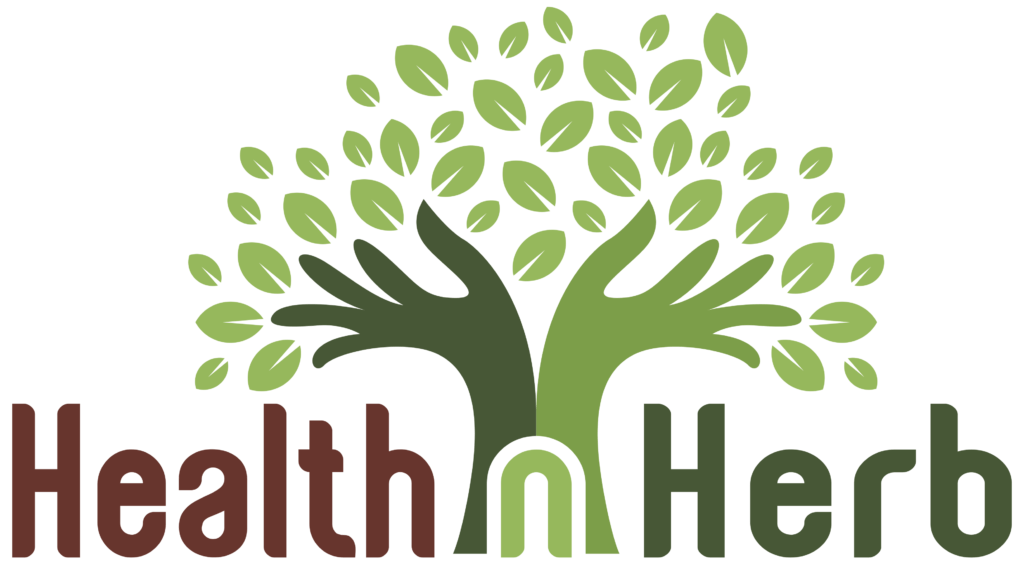
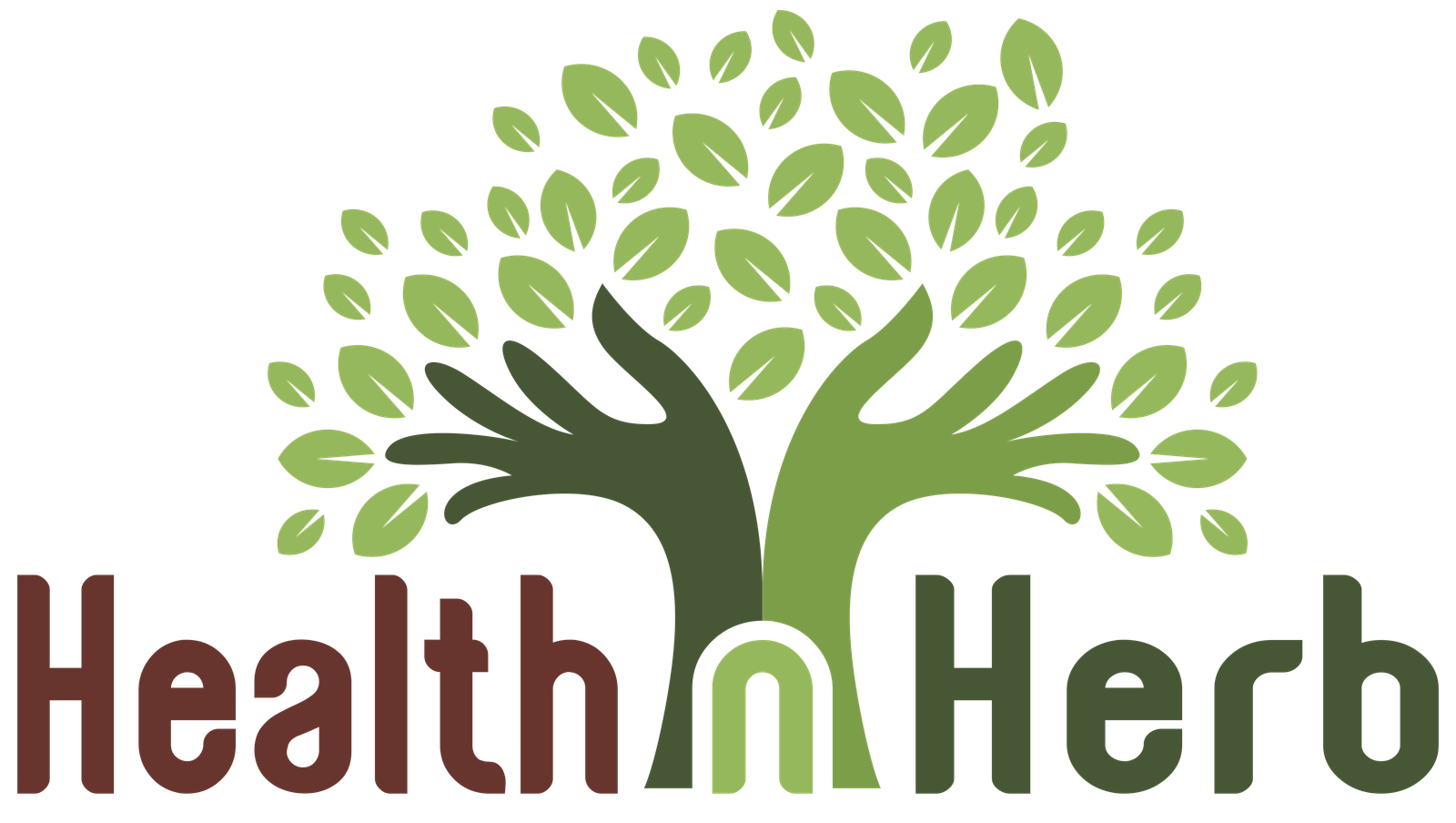





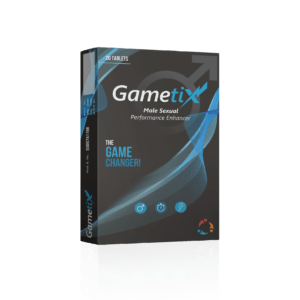




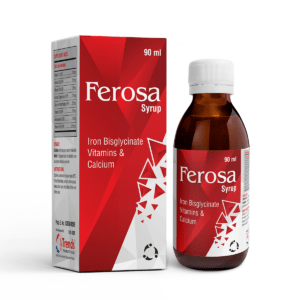







mishaal kabeer –
great for energy